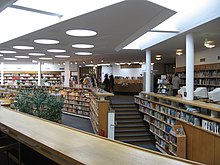
A public library is a library, most often a lending library, that is accessible by the general public and is usually funded from public sources, such as taxes. It is operated by librarians and library paraprofessionals, who are also civil servants.
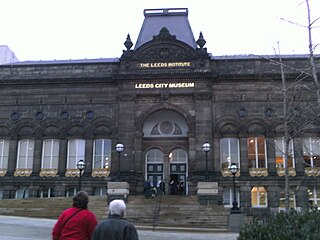
Mechanics' institutes, also known as mechanics' institutions, sometimes simply known as institutes, and also called schools of arts, were educational establishments originally formed to provide adult education, particularly in technical subjects, to working men in Victorian-era Britain and its colonies. They were often funded by local industrialists on the grounds that they would ultimately benefit from having more knowledgeable and skilled employees. The mechanics' institutes often included libraries for the adult working class, and were said to provide them with an alternative pastime to gambling and drinking in pubs.
A parochial school is a private primary or secondary school affiliated with a religious organization, and whose curriculum includes general religious education in addition to secular subjects, such as science, mathematics and language arts. The word parochial comes from the same root as "parish", and parochial schools were originally the educational wing of the local parish church. Christian parochial schools are called "church schools" or "Christian schools."

Thomas Chalmers, was a Scottish Presbyterian minister, professor of theology, political economist, and a leader of both the Church of Scotland and of the Free Church of Scotland. He has been called "Scotland's greatest nineteenth-century churchman".

Benjamin Kennicott was an English churchman and Hebrew scholar.
A benefice or living is a reward received in exchange for services rendered and as a retainer for future services. The Roman Empire used the Latin term beneficium as a benefit to an individual from the Empire for services rendered. Its use was adopted by the Western Church in the Carolingian Era as a benefit bestowed by the crown or church officials. A benefice specifically from a church is called a precaria, such as a stipend, and one from a monarch or nobleman is usually called a fief. A benefice is distinct from an allod, in that an allod is property owned outright, not bestowed by a higher authority.
A parish register, alternatively known as a parochial register, is a handwritten volume, normally kept in the parish church of an ecclesiastical parish in which certain details of religious ceremonies marking major events such as baptisms, marriages, and burials are recorded. Along with these events, church goods, the parish's business, and notes on various happenings in the parish may also be recorded. These records exist in England because they were required by law and for the purpose of preventing bigamy and consanguineous marriage.
A vestry was a committee for the local secular and ecclesiastical government of a parish in England, Wales and some English colonies, which originally met in the vestry or sacristy of the parish church, and consequently became known colloquially as the "vestry". At their height, the vestries were the only form of local government in many places and spent nearly one-fifth of the budget of the British government. They were stripped of their secular functions in 1894 and were abolished in 1921.
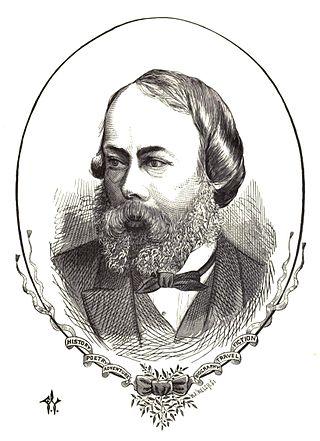
Charles Edward Mudie , English publisher and founder of Mudie's Lending Library and Mudie's Subscription Library, was the son of a second-hand bookseller and newsagent. Mudie's efficient distribution system and vast supply of texts revolutionized the circulating library movement, while his "select" library influenced Victorian middle-class values and the structure of the three-volume novel. He was also the first publisher of James Russell Lowell's poems in England, and of Emerson's Man Thinking.

The Public Libraries Act 1850 was an Act of the United Kingdom Parliament which first gave local boroughs the power to establish free public libraries. The Act was the first legislative step in the creation of an enduring national institution that provides universal free access to information and literature, and was indicative of the moral, social and educative concerns of the time. The legacy of the Act can be followed through subsequent legislation that built on and expanded the powers granted in 1850 and the 4,145 public libraries that exist in the United Kingdom in the 21st century can trace their origins back to this Act.
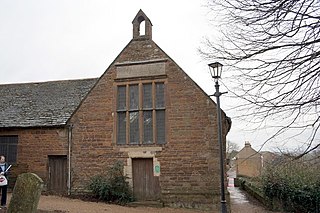
Robert Johnson was a Church of England cleric and the founder of both Oakham School and Uppingham School.

Enfield Highway is an area in the London Borough of Enfield, north London. It is roughly located in the area either side of Hertford Road between Hoe Lane and The Ride.

A subscription library is a library that is financed by private funds either from membership fees or endowments. Unlike a public library, access is often restricted to members, but access rights can also be given to non-members, such as students.

A circulating library lent books to subscribers, and was first and foremost a business venture. The intention was to profit from lending books to the public for a fee.
Barnabas Oley (1602–1686) was an English churchman and academic. A royalist figure of the First English Civil War, he was also the first editor of George Herbert and Thomas Jackson, and a personal friend of Nicholas Ferrar. In old age he was archdeacon of Ely for a year.
English county histories, in other words historical and topographical works concerned with individual ancient counties of England, were produced by antiquarians from the late 16th century onwards. The content was variable: most focused on recording the ownership of estates and the descent of lordships of manors, thus the genealogies of county families, heraldry and other antiquarian material. In the introduction to one typical early work of this style, The Antiquities of Warwickshire published in 1656, the author William Dugdale writes:
I offer unto you my noble countriemen, as the most proper persons to whom it can be presented wherein you will see very much of your worthy ancestors, to whose memory I have erected it as a monumentall pillar and to shew in what honour they lived in those flourishing ages past. In this kind, or not much different, have divers persons in forrein parts very learnedly written; some whereof I have noted in my preface: and I could wish that there were more that would adventure in the like manner for the rest of the counties of this nation, considering how acceptable those are, which others have already performed
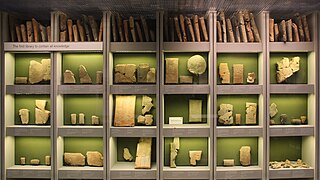
The history of libraries began with the first efforts to organize collections of documents. Topics of interest include accessibility of the collection, acquisition of materials, arrangement and finding tools, the book trade, the influence of the physical properties of the different writing materials, language distribution, role in education, rates of literacy, budgets, staffing, libraries for targeted audiences, architectural merit, patterns of usage, and the role of libraries in a nation's cultural heritage, and the role of government, church or private sponsorship. Computerization and digitization arose from the 1960s, and changed many aspects of libraries.
James Kirkwood was a Church of Scotland minister, advocate of free parish libraries, and promoter of Scottish Gaelic language literacy. He was behind the Bible translations into Scottish Gaelic of Robert Kirk.
John Venn was a priest of the Church of England who was a central figure of the group of religious philanthropists known as the Clapham Sect.

